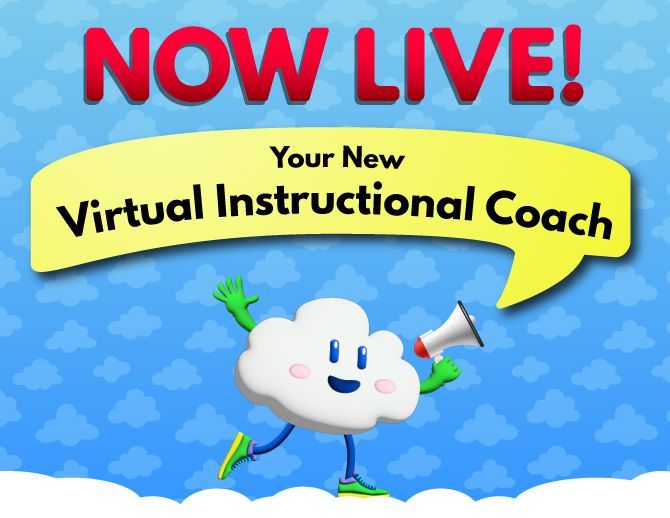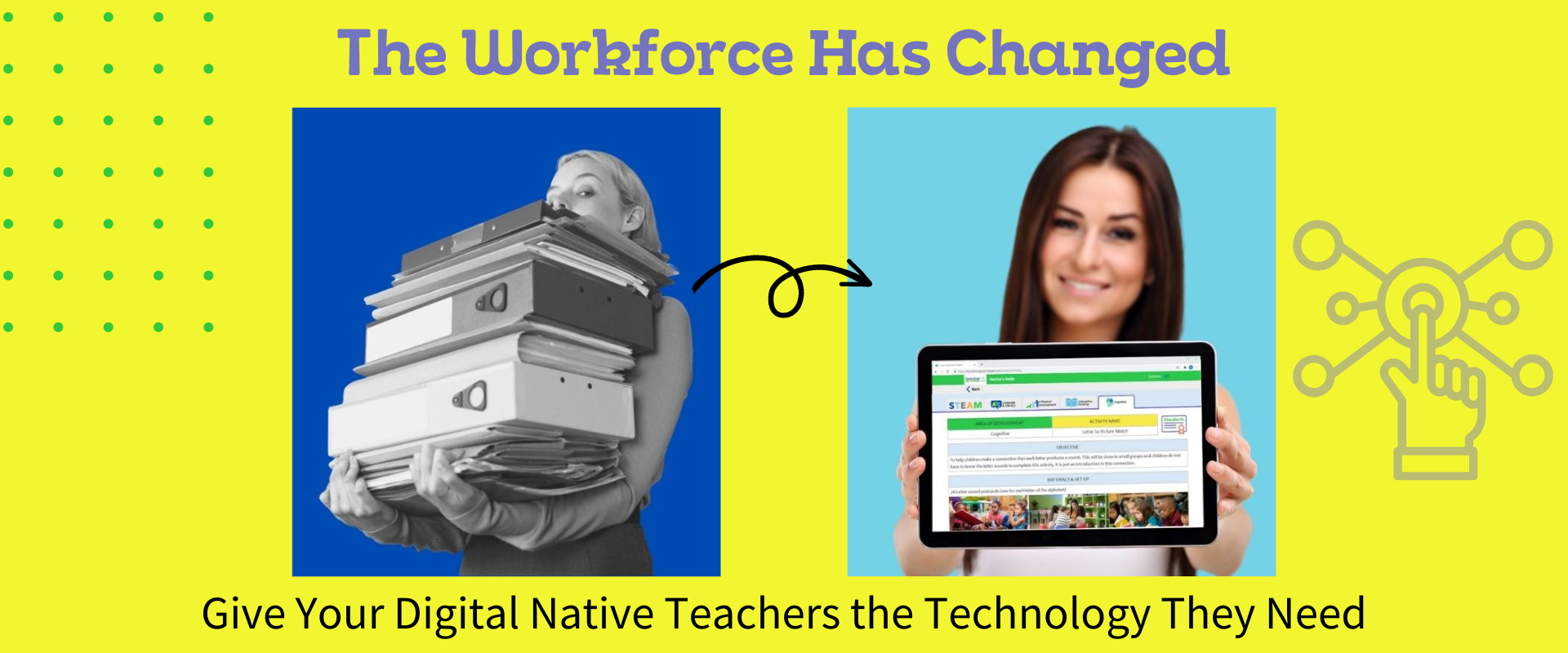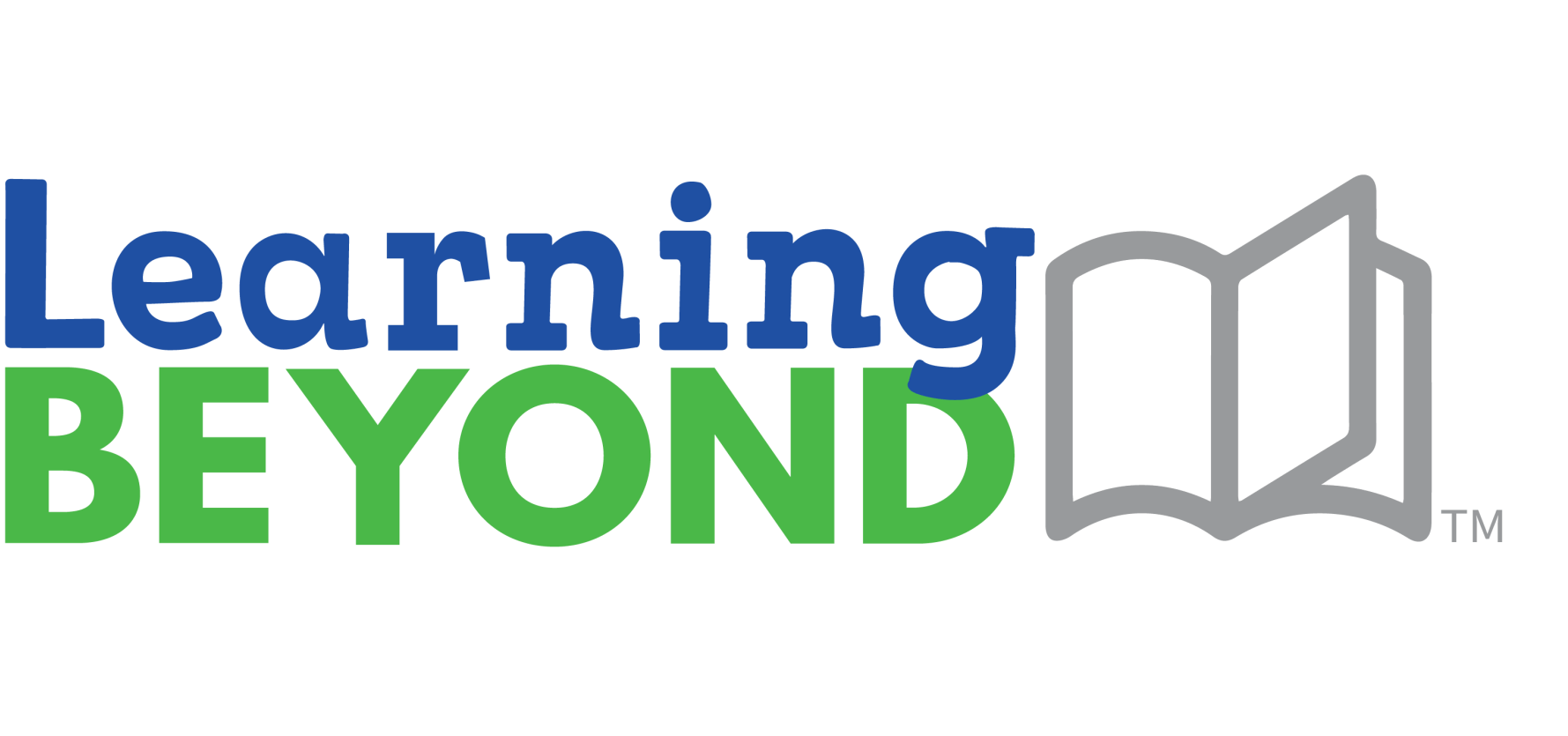Today’s early learning teachers need our help to hit the reset button.
Primarily viewed as childcare workers instead of teachers, they’re responsible for setting the foundation of learning in our children. As such, they deserve the training, tools, and support required to succeed.
According to the U.S. Bureau of Labor Statistics, the average age of an early learning teacher is 39. They are Millennials and members of Gen Z, born in or after 1997, are 22 years of age, and younger. They are primarily white, 85% are women, and the most common degree is a High School Diploma. As “Digital Natives,” a name coined by Marc Prensky in 2009, they grew up with the internet and instant access to information. Digital Natives currently represents 38% of the workforce and are projected to grow to 58% in the next ten years.
Millennials and Gen Z workers are challenging the status quo. They are looking for innovation. Digital Natives are used to having everything they need immediately at their fingertips, prefer graphics to text, and can process information while multitasking. If you have invested in a curriculum program, you are familiar with the stacks of binders, books, and intimidating approach that has been the norm for over 20 years. Armed with high school education and little-to-no experience, it is nearly impossible to effectively implement a curriculum designed for master’s degree educated and experienced teachers. While there is a projected 8% growth rate from 2020 to 2030 for early childcare teaching positions, 26 to 40% of teachers are leaving the profession per year.
Other industries are addressing similar labor shortages with increased wages and benefits for new hires, including sign-on bonuses, tuition support, insurance, and cell phones. We must ask ourselves, why would a teacher want to stay in a $12 per hour job when they can get a less stressful job for more money and meaningful benefits?
Innovation is the key to navigating beyond what we're facing, resetting the industry post-COVID-19, and moving forward, together, successfully. Throughout history, innovation has come about to solve a problem. However, innovation is NOT only about technology. It is about changing our perspective and challenging the status quo, but where to start? To avoid feeling overwhelmed, we recommend keeping it simple:
- Assess the tools and resources you are currently using
- Push yourself to define what is working and what is not
- Brainstorm with your teachers and be open to new perspectives
- Take a hard look at the quality of life and work/life balance you are offering yourself, your teachers, and your staff
- Attend webinars and training to support your professional development
Curriculum is the foundation of every early childhood program – the glue that holds everything together. It is the foundation of a child's learning, and now more than ever, it must also be the foundation for the training and professional development of today's teachers.
There is an unlimited opportunity to think differently and challenge what you know. Use innovative approaches to curriculum to support growth for your teachers and children, promoting their success now and in the future.
Learning Beyond offers a 100% online curriculum for infants to Pre-K 4. Developed by early learning experts, owners, directors, and teachers to provide affordable, equitable, 21st-century curriculum solutions for today's teachers. Start your free 1-month trial today.
Sources:
U.S. Bureau of Labor Statistics;
CNBC Article, Mar 5,2019;
Zippia Research;
Schaack, Diana D., Vi-Nhuan Leb, and Jennifer Stedronc. 2020. “When Fulfillment is Not Enough: Early Childhood Teacher Occupational Burnout and Turnover Intentions from a Job Demands and Resources Perspective.” Early Education and Development 31 (7): 1011–1030.
View more of our blogs!











